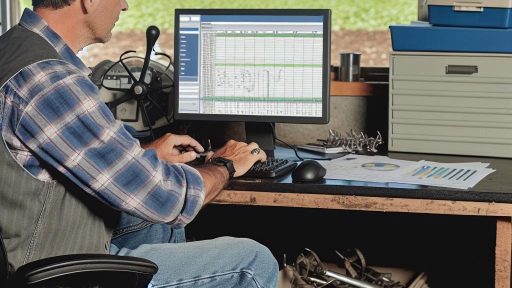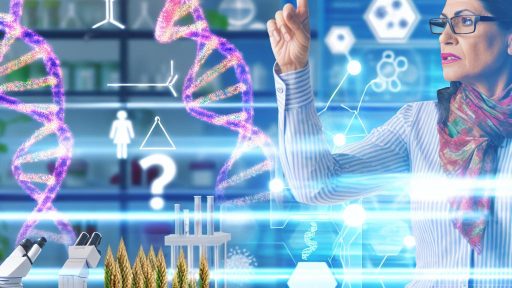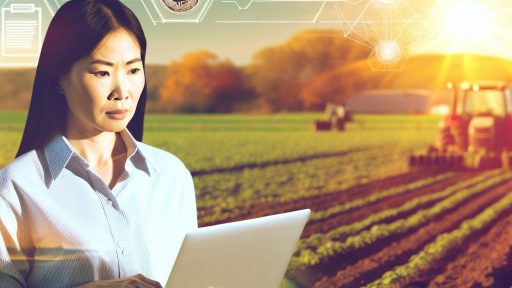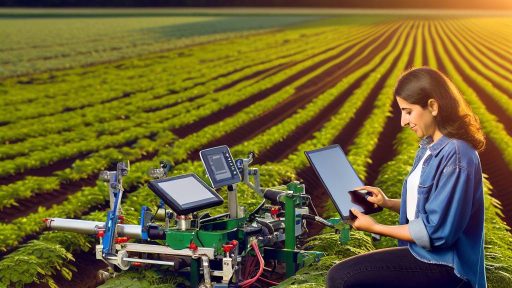Introduction to Drones in Agriculture
Drones revolutionize agricultural practices across the globe.
Farmers utilize drones to enhance productivity and efficiency.
Moreover, these flying devices gather critical data for informed decision-making.
What Are Agricultural Drones?
Agricultural drones are unmanned aerial vehicles designed for farming purposes.
They come equipped with high-resolution cameras and sensors.
These tools allow for detailed mapping of fields.
Farmers can monitor crop health from above with great precision.
Benefits of Using Drones
Drones offer numerous advantages to modern farming.
- They provide real-time data on crop conditions.
- Drones help in pest and weed identification.
- They enhance irrigation efficiency through detailed monitoring.
- Drones assist in soil analysis for better management.
Types of Agricultural Drones
There are various types of drones tailored for agricultural use.
- Multi-rotor drones are popular for their agility and ease of use.
- Fixed-wing drones cover larger areas but require more skill to operate.
- Hybrid drones offer benefits of both multi-rotor and fixed-wing types.
Real-World Applications
Farmers apply drone technology in diverse ways.
- Drones assist in crop mapping, creating detailed field maps.
- They help in assessing and monitoring plant health.
- Drones streamline irrigation management by identifying drier areas.
- They can also facilitate aerial seeding for reforestation projects.
The Future of Drones in Agriculture
The future of drones in agriculture looks promising.
Innovative technologies will continue to integrate with drone systems.
Farmers will gain even more powerful tools for management.
Ultimately, drones will lead to sustainable agricultural practices.
Types of Drones Commonly Used in Farming
Multirotor Drones
Multirotor drones are widely popular in agriculture.
Transform Your Agribusiness
Unlock your farm's potential with expert advice tailored to your needs. Get actionable steps that drive real results.
Get StartedThey feature multiple rotors that provide stability and control.
Farmers often use these drones for crop surveillance.
They capture detailed images and data about plant health.
Additionally, they are suitable for mapping large fields.
Fixed-Wing Drones
Fixed-wing drones cover more area in a single flight.
These drones resemble small airplanes and utilize wings for lift.
They are ideal for large farms needing extensive data collection.
Farmers can use fixed-wing drones for aerial imaging.
This technology helps in monitoring crop growth and yields.
Hybrid Drones
Hybrid drones combine features of multirotor and fixed-wing designs.
They can hover like a helicopter and fly like an airplane.
This flexibility makes them versatile for various farming tasks.
Farmers appreciate their ability to conduct detailed inspections.
Furthermore, hybrid drones enable efficient data gathering over large areas.
Payload-Specific Drones
Some drones are designed for specific tasks in agriculture.
These payload-specific drones might deploy fertilizers or pesticides.
Others support soil analysis and monitoring environmental conditions.
Specialized drones make farming operations more efficient and precise.
They allow farmers to target specific areas for treatment.
Survey and Mapping Drones
Survey and mapping drones utilize advanced sensors and imaging technology.
They provide precise topographical maps of the land.
This capability helps in planning and management of farm resources.
Farmers can analyze soil types and moisture levels through these maps.
Ultimately, it enhances the decision-making process in agriculture.
Showcase Your Farming Business
Publish your professional farming services profile on our blog for a one-time fee of $200 and reach a dedicated audience of farmers and agribusiness owners.
Publish Your ProfileBenefits of Drone Technology for Crop Monitoring
Enhanced Data Collection
Drones provide precise aerial imagery for agricultural monitoring.
This technology captures data quickly across large fields.
Farmers save time and resources by reducing manual surveys.
Moreover, drones collect information at various growth stages.
Real-time Monitoring
Drone technology enables real-time monitoring of crops.
This allows immediate identification of issues like pests and disease.
Consequently, farmers can respond promptly to protect their yields.
Additionally, real-time data aids in efficient resource allocation.
Improved Crop Health Analysis
Drones analyze crop health using multispectral and thermal cameras.
These cameras detect moisture levels and plant stress effectively.
Farmers can use this information to optimize irrigation practices.
Furthermore, accurate health assessments lead to better yield predictions.
Cost Efficiency
Utilizing drones reduces labor costs associated with monitoring crops.
In fact, many farmers report lower operational expenses overall.
Drones also minimize wastage by providing targeted treatment options.
This results in better input use and enhanced profitability.
Environmentally Friendly Practices
Drones promote sustainable farming through precision agriculture.
This method involves applying inputs only where necessary.
As a result, farmers significantly reduce chemical runoff.
Additionally, it leads to improved soil health and ecosystem preservation.
Explore Further: Blockchain For Ethical Sourcing In Agricultural Supply Chains
Data Collection and Analysis
Utilizing Drones for Crop Monitoring
Drones offer farmers a new way to monitor crop health efficiently.
These flying devices collect high-resolution images and data from fields.
Farmers can use this information to assess crop conditions across vast areas.
Moreover, drones provide insights into issues like pest infestations and diseases.
Precision Agriculture and Data Analytics
Integrating drone technology with data analytics enhances precision agriculture.
Farmers can make real-time decisions based on collected data.
This approach improves resource allocation and reduces waste.
In addition, farmers can track changes in soil health effectively.
Mapping and 3D Modeling
Drones enable the generation of accurate topographical maps of farmland.
These maps help farmers visualize terrain and identify problem areas.
With 3D modeling, farmers can simulate various scenarios for crop management.
This capability leads to better planning and risk management strategies.
Enhancing Yield Predictions
Drones play a critical role in forecasting crop yields.
By analyzing data over time, farmers can predict production levels more accurately.
This information aids in market planning and resource management.
Consequently, farmers can make informed decisions about planting and harvesting.
Cost-Effectiveness and Time Savings
Employing drones in agriculture can reduce operational costs significantly.
The speed of data collection saves valuable time for farmers.
This efficiency allows farmers to focus on implementation rather than data gathering.
Showcase Your Farming Business
Publish your professional farming services profile on our blog for a one-time fee of $200 and reach a dedicated audience of farmers and agribusiness owners.
Publish Your ProfileAdditionally, drones can cover large areas quickly, maximizing productivity.
Gain More Insights: Machine Learning Applications In Farming
Precision Agriculture: Using Drones for Targeted Treatments
Introduction to Precision Agriculture
Precision agriculture utilizes advanced technology to enhance farming efficiency.
Drones play a vital role in this innovative approach.
Farmers can collect accurate data about their fields quickly.
This enables them to make informed decisions about crop management.
Benefits of Using Drones in Agriculture
Drones offer numerous benefits for modern agricultural practices.
- They provide real-time data on crop health.
- Farmers can identify nutrient deficiencies promptly.
- Drones assist in monitoring pest infestations.
As a result, farmers can implement targeted treatments.
Applications of Drones in Targeted Treatments
Drones can apply fertilizers, pesticides, and herbicides efficiently.
This targeted approach reduces chemical usage and minimizes waste.
Farmers can also utilize drones for irrigation management.
They can identify areas needing additional water through thermal imaging.
Data Collection and Analysis
The integration of drones allows for extensive data collection.
Farmers can analyze growth patterns and yield predictions.
This analysis aids in optimizing resource allocation.
Furthermore, it enhances overall farm productivity.
Challenges and Considerations
Despite their advantages, drone use in agriculture presents challenges.
Farmers must comply with regulatory requirements for drone operations.
Weather conditions can also affect drone efficiency.
Training is essential for farmers to maximize drone capabilities.
The Future of Drones in Agriculture
The future of drones in agriculture looks promising.
Advancements in technology will continue to enhance their functionality.
Farmers can expect increased automation and data integration.
This will further improve precision agriculture practices.
Learn More: Integrating Automated Machinery Into Traditional Farming
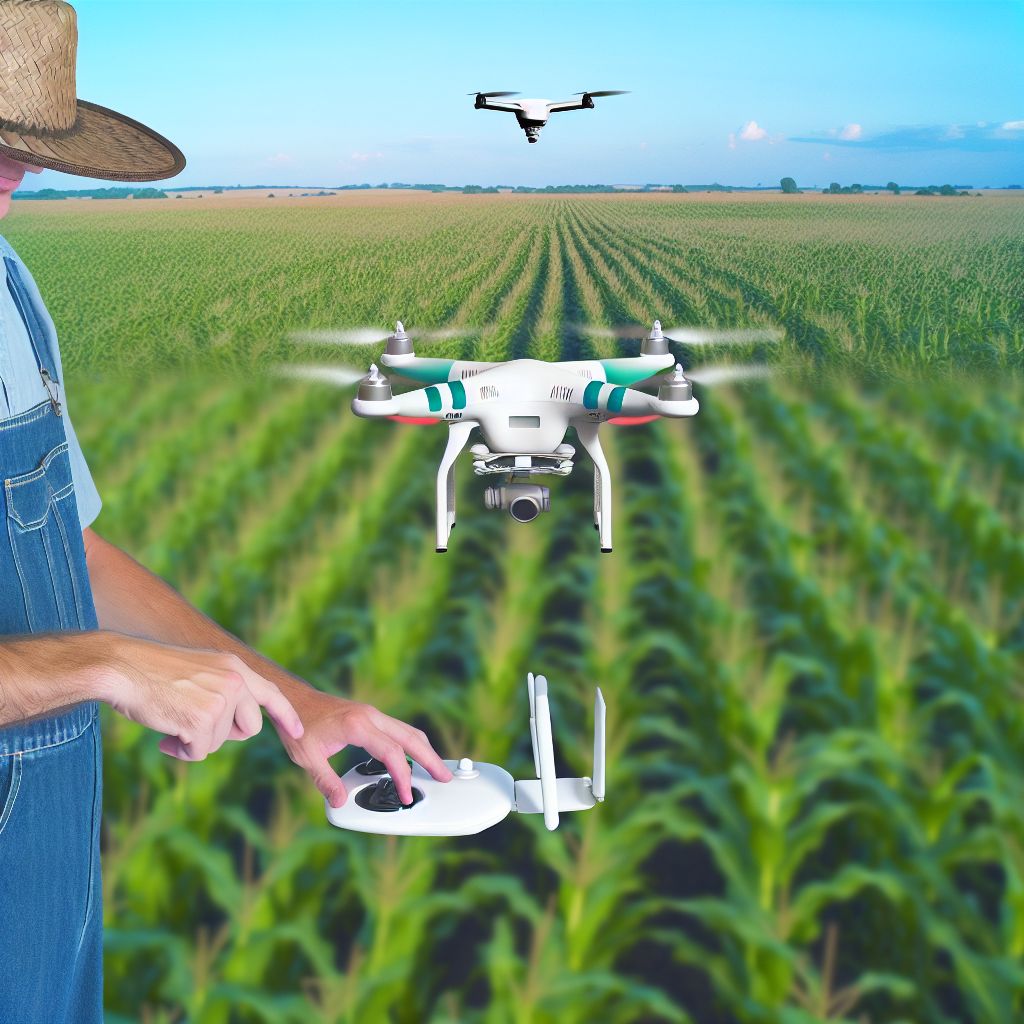
Case Studies: Successful Drone Implementations in Farming
Precision Farming at Pine Valley Farms
Pine Valley Farms adopted drone technology to enhance their crop management.
The drones perform aerial surveys to assess crop health effectively.
They capture high-resolution images of the fields, identifying areas needing attention.
This implementation helps farmers save time and reduce labor costs.
As a result, yields increased by 15% over three growing seasons.
Crop Monitoring with Green Tech Co.
Green Tech Co. utilized drones for real-time crop monitoring.
The drones collect data on soil moisture levels and plant health.
This data allows for timely irrigation adjustments, conserving water resources.
Farmers reported a 20% decrease in water usage while maintaining yields.
Moreover, better monitoring improved pest control strategies.
Mapping Precision with AgriFly Solutions
AgriFly Solutions specializes in using drones for field mapping.
Their drones create detailed maps for precision planting.
Farmers can now adjust seed rates based on soil variations.
This technology has increased planting accuracy across large fields.
Farmers have experienced a significant boost in overall productivity.
Showcase Your Farming Business
Publish your professional farming services profile on our blog for a one-time fee of $200 and reach a dedicated audience of farmers and agribusiness owners.
Publish Your ProfileFertility Assessment at Harvest Acres
Harvest Acres employs drones to assess soil fertility across its fields.
Drones gather data that assists in creating tailored fertilization plans.
Farmers apply fertilizers more precisely, reducing costs and waste.
Overall, this practice has resulted in healthier crops and higher profits.
Farmers are now better equipped to meet market demands.
Aerial Spraying Innovations with SkySpray Technologies
SkySpray Technologies revolutionized crop spraying with drone technology.
Drones can accurately apply pesticides and fertilizers with minimal drift.
This method minimizes chemical use, benefiting both the environment and farmers.
Additionally, it reduces the risk of chemical exposure to workers.
Farmers report greater efficiency and healthier ecosystems on their land.
Delve into the Subject: Benefits of Controlled Environment Agriculture for Sustainable Farming
Regulatory Considerations for Flying Drones on Farmland
Understanding Drone Regulations
Regulations significantly impact drone usage in agriculture.
National and local laws dictate how and where farmers can fly drones.
These rules ensure safety in the airspace as well as on the ground.
Licensing Requirements
Farmers must acquire the necessary licenses to pilot drones legally.
The Federal Aviation Administration (FAA) mandates a Remote Pilot Certificate.
To obtain this certification, applicants must pass an exam designed by the FAA.
Operational Limitations
Drone operations come with specific limitations that farmers should follow.
For instance, drones cannot fly beyond the visual line of sight.
Additionally, most drones are restricted to a maximum altitude of 400 feet.
Insurance Considerations
Insurance plays a critical role in operating drones on farms.
Farmers should consider liability insurance to safeguard against accidents.
Moreover, drone insurance can protect the equipment from damage or loss.
State and Local Laws
In addition to federal regulations, state and local laws apply to drone usage.
Farmers must familiarize themselves with these specific regulations.
Some states may have restrictions on flying over private property.
Data Privacy Concerns
Farmers must also consider data privacy when using drones.
Drone images and data collection can infringe on privacy rights.
Consulting with legal experts will help ensure compliance with privacy laws.
Staying Informed
The regulatory landscape for drones is constantly evolving.
Farmers must stay informed about changes to laws and regulations.
Joining industry groups can provide valuable resources and updates.
Future Trends in Drone Technology and Agriculture
Enhancements in Sensor Technology
Drone technology continuously evolves with advancements in sensor capabilities.
These enhancements allow precise monitoring of crop health.
A diverse range of sensors now provides real-time data collection.
For instance, multispectral and thermal sensors enhance decision-making.
Consequently, farmers can make informed choices regarding irrigation and fertilization.
Integration of Artificial Intelligence
Artificial intelligence plays a vital role in the agricultural sector.
Drones equipped with AI analyze data efficiently.
They detect patterns that humans might overlook.
Showcase Your Farming Business
Publish your professional farming services profile on our blog for a one-time fee of $200 and reach a dedicated audience of farmers and agribusiness owners.
Publish Your ProfileThis leads to quicker response times to emerging issues.
For example, AI enhances pest identification and management strategies.
Autonomous Drones and Operation
The push for fully autonomous drones is gaining momentum.
Such drones can operate without human intervention.
This trend significantly reduces labor costs for farmers.
Additionally, autonomous drones improve operational efficiency.
Farmers can schedule regular flights for monitoring automated tasks.
Improved Connectivity and Data Sharing
Enhanced connectivity is transforming agricultural practices.
Drones now sync with cloud-based platforms effortlessly.
This synchronization enables seamless data sharing among stakeholders.
Farmers can access comprehensive reports in real time.
Consequently, they can respond rapidly to changing conditions.
Regulatory Changes and Standards
Regulatory frameworks around drone use are evolving.
Governments are establishing clearer guidelines for safe operation.
These changes aim to foster innovation while ensuring safety.
Farmers must stay informed about new regulations.
Adhering to standards can lead to smoother integrations into farming practices.

